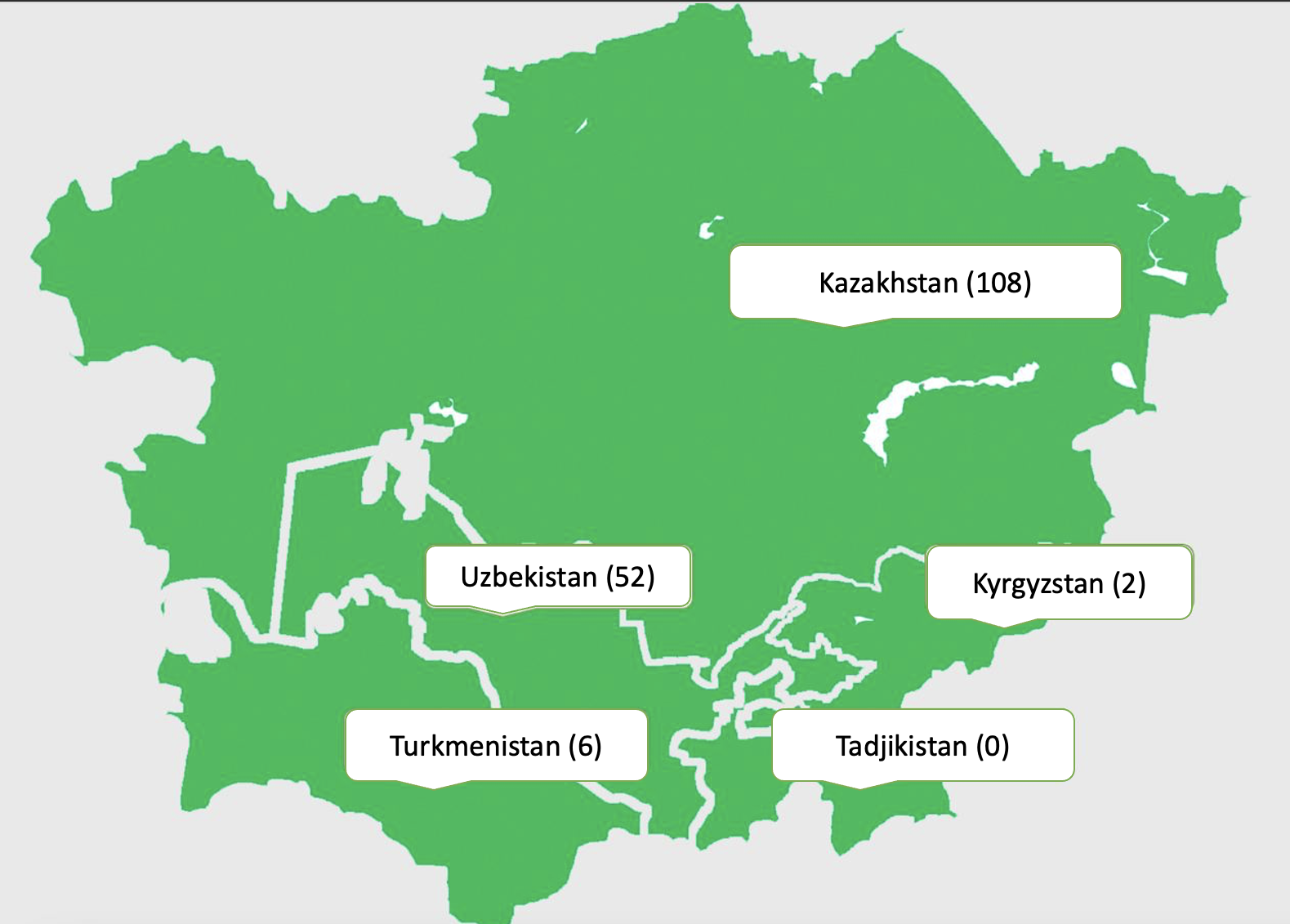Got questions? Send us an email:
info@hpbs.uz
Certified Projects in Central Asia and Mongolia
In Central Asia and Mongolia, there is a growing interest in sustainable construction, with many buildings receiving certifications in systems such as LEED, BREEAM, WELL, and EDGE.
This trend is driven by international development institutions that stimulate these emerging markets by directing preferential financing towards sustainable projects. Consequently, we can expect to see more and more of these projects in developing markets.
LEED, BREEAM, WELL, and EDGE certifications incorporate advanced Western and global construction practices aimed at reducing negative environmental impacts, improving the quality, and enhancing the operational characteristics of buildings. Each year, more buildings are certified under these systems, thereby confirming their status as green buildings on a global scale.
As of June 2024, our research indicates that 164 buildings in Central Asia and Mongolia have applied for certification, with 34 of them having already been certified.
Statistics on Green Certified Buildings in Central Asia and Mongolia
The statistics presented for April 2024 show the number of certified buildings, certification levels by country in Central Asia and Mongolia, and the green building standards EDGE, LEED, BREEAM, and WELL.

*WELL Health-Safety Rating focuses on the health and safety of people within buildings. Currently, there are few buildings certified under WELL Certification in these regions, as it is the most challenging certification system requiring more effort, competencies, and validations for implementation.

Examples of Buildings Implementing Green Standards
NUR Residential Complex, Namuna Development in Tashkent - EDGE Certification
The NUR residential complex includes 30 buildings with 9 and 16 floors, with 20 of them undergoing certification. The complex covers an area of 3.55 hectares and is located in the city center.
In the certification process:
- A technical certification strategy for the residential complex under the EDGE system has been developed.
- Sections on energy efficiency, water conservation, and lifecycle analysis of materials have been analyzed, including the selection of materials, equipment, and construction methods.
- EDGE requirements will be implemented at the design and construction stages.
- Documentation will be prepared for comprehensive audits at the design and construction stages.
Center for Contemporary Art in Tashkent - LEED Certification
The Center for Contemporary Art is located in a former diesel power plant (1912), with renovation work starting in 2022. The project aims for a LEED Gold rating.
In the certification process:
- A technical strategy for LEED certification has been developed.
- The facility has been assessed at the concept development stage.
- Sustainable construction practices have been designed.
State Museum of Uzbekistan in Tashkent - LEED Certification
The State Museum of Uzbekistan is a project with a total area of 40,000 m², located in the historical part of Tashkent within the largest national park of Uzbekistan. The planned building consists of nine floors, including three underground levels.
In the certification process:
- A technical strategy for LEED certification has been developed.
- Compliance with LEED requirements has been checked at the design stage.
- Initial energy analysis has been conducted.
Statistical data shows that countries in Central Asia and Mongolia are implementing green certification systems in categories such as offices, residential buildings, infrastructure, and industrial facilities. The emergence of green taxonomies greatly promotes the development of green building, indicating that projects certified under EDGE, LEED, BREEAM, and WELL fall under the category of green projects and can attract green financing and issue green bonds, thus stimulating the market to transition to sustainable projects.
Additionally, development banks in these regions, such as IFC, EBRD, ADB, and others, direct funding lines to projects with sustainable and social components. Such projects meet the main requirements of sustainable development, reduce greenhouse gas emissions, and offer increased value. They are energy-efficient, significantly reducing building operating costs and benefiting the health of occupants.